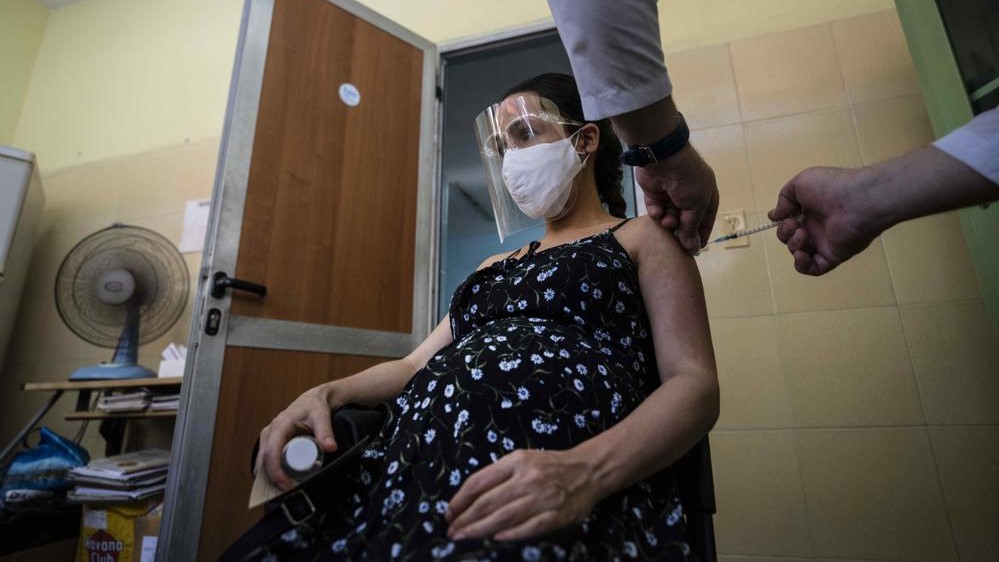After the Government had boasted that no pregnant women died in Cuba as a result of Covid-19 in 2020, in less than a month, from August 1 to August 25, at least 28 pregnant women lost their lives. The head of Epidemiology at the Ministry of Public Health (MINSAP), Francisco Durán, reported on the deaths of pregnant women in his daily conferences, but the official report published on the MINSAP's website stopped including them in its details on causes of death.
On August 10 authorities reported that there had been 35 maternal deaths in 2021, but that figure spiked in the next 15 days, up to at least 63.
According to Noemí Cauza Palma, national head of the Maternal and Child Care Program (PAMI), studies carried out over the course of these months identified as risk factors mothers over age 30, gestational ages greater than 26 weeks, high blood pressure and diabetes. This is what she told Miguel Díaz-Canel at one of the government meetings, according to the official newspaper Granma.
But the deaths reported, above all in the last 15 days, correspond to girls under 30, with some exceptions. In some cases, the official information has omitted the age of the deceased expecting women.
So far this year there have already been 4,536 pregnant and puerperal women diagnosed with the coronavirus. Havana (with 1,425), Matanzas (719), Santiago de Cuba (468) and Guantánamo (221) have been the provinces with the highest figures.
According to data from Cauza Palma, the 320 pregnant women admitted for serious care before August 10 represent 7.1% of all those who have become ill. The highest rates were recorded in Ciego de Ávila (13.4%), Guantánamo (10.1%) and Camagüey (9.4%).
The health authorities, including the head of the PAMI, have attributed the increase in pregnant women positive for Covid-19 and their critical reactions to the disease to the Delta strain, detected in Cuba in April, when the first pregnant woman died.
There have been more deaths of pregnant women despite the fact that "vaccination in pregnant women has been eagerly embraced by both pregnant women and their families." According to the official, "89.1% of the group to be vaccinated has already been given the first dose."
The situation coincided with a general worsening of the situation with Covid-19 all across the island, overwhelmed hospitals and shortages of medicines, supplies and treatments of all kinds.
Dr. Sara Urgellés Carreras, a specialist in Obstetrics and Gynecology and a professor at the Dr. Luis Díaz Soto Military Hospital, admitted in a television appearance cited by Granma on August 19 that "there is a significant number of pregnant women in critical condition, with clinical evolutions such that we cannot guarantee that they will survive, despite all the human and material resources used."
"Their evolutions are very unfavorable, especially in patients with gestational ages of 26 to 32 weeks, and those who present overweight, obesity or decompensated diabetes," she stressed.
Why is this population group at high risk?
Characterizing the pregnant and puerperal women who have died in Cuba, Cauza Palma stated that 97% of those studied were at more than 26 along in their pregnancies; their ages ranged between 20 and 38; 34% had associated comorbidities, such as bronchial asthma, epilepsy, sicklemia, and lupus erythematosus; and 37% died with pulmonary embolisms.
Danilo Napoles Méndez, an advisor to the Maternal and Child Care Program, stated that when grappling with Covid-19 "one of the most difficult tasks has involved pregnant women."
Addressing why 37% of mortality in this population group is related to pulmonary thromboembolisms, he explained that "it is basically associated with the gradual increase, towards the third trimester of pregnancy, of all the coagulation factors."
"Over the course of her pregnancy the woman constantly provides the fetus with oxygen and nutrients... regardless of the conditions she is in. Therefore, if the pregnant woman suffers respiratory failure and is continuously getting worse, her body ignores this, as it is prepared to continue providing the child with the oxygen it requires, even under very difficult conditions. Their worsening could, then, be permanent, hence not only the increase in seriously ill patients, but also in premature births in infected mothers."
The lack of medicinal oxygen to care for Covid-19 patients has been another critical shortcoming in the Cuban public health system's crisis in recent weeks.
After complaints from citizens on social media, mainly at Holguín hospitals, the Cuban government had to acknowledge the oxygen crisis in several medical centers on the island, and ascribed the lack of the product to a breakdown.
The Communist Party of Cuba then activated its propaganda mechanisms, sending Miguel Díaz-Canel to visit the oxygen production plant of the Ministry of the Revolutionary Armed Forces (FAR), located at the San Antonio de los Baños Air Base and Havana's gasification business unit.
In line with the promotion of the health system in Cuba as an alleged "world power", the Government spotlights its Maternal and Child Program, of whose success it boasts every year by presenting opaque statistics on maternal and infant mortality.
In a delayed publication of the health statistics from last year, the MINSAP reported that "the infant mortality rate continues, for 13 consecutive years, equal to or below five deaths under one year of age per 1,000 live births; in 2020 it was 4.9."
"The 2020 maternal mortality rate was 40.0 deaths per 100,000 live births, 7.0% higher than that from 2019. The maternal mortality rate due to direct causes increased, while the rates due to indirect and late causes decreased. No deaths are reported from effects having obstetric causes," the ministry said.
It remains to be seen how the rising numbers of deaths from Covid-19 in pregnant women will be presented in the official data published next year.
